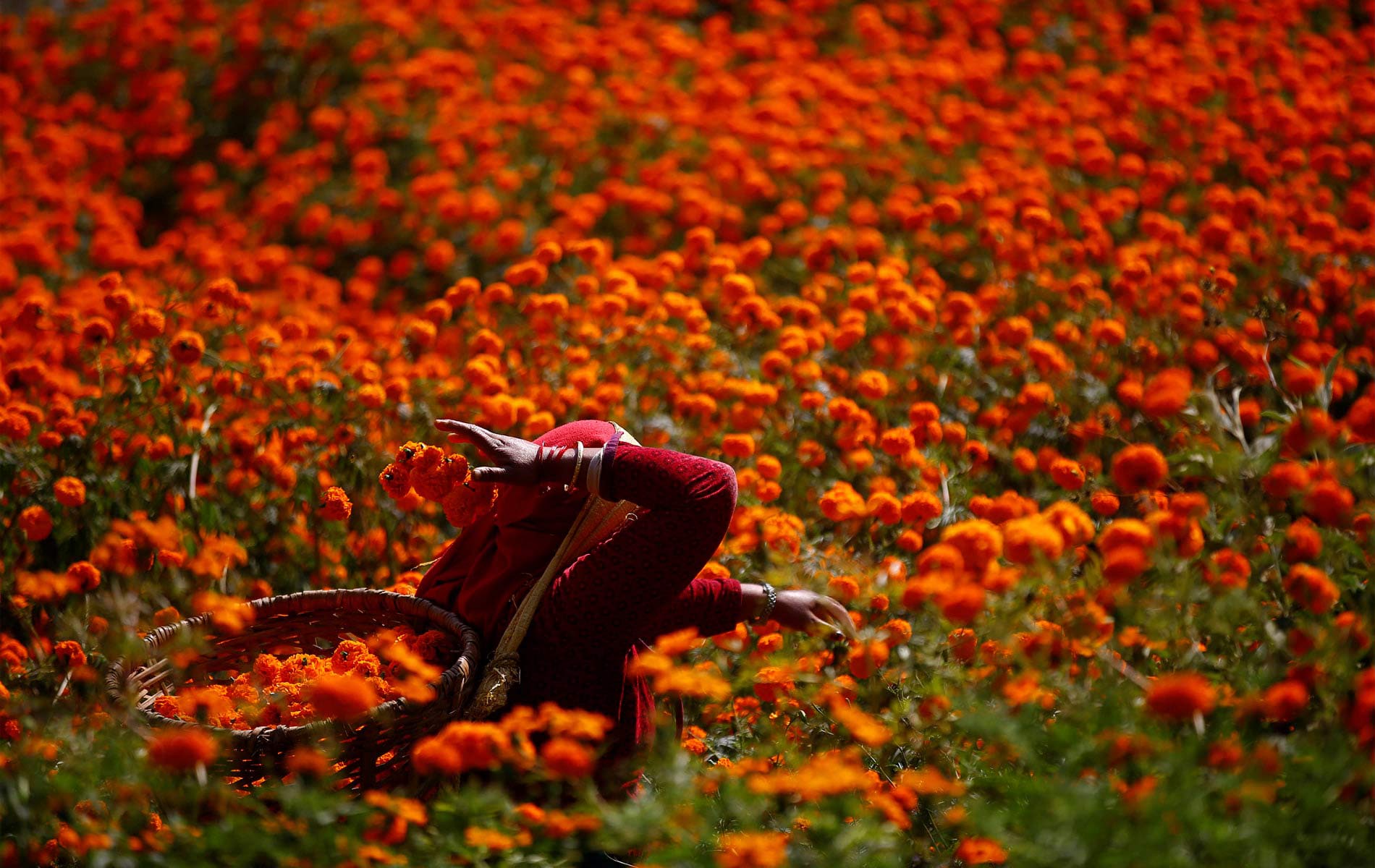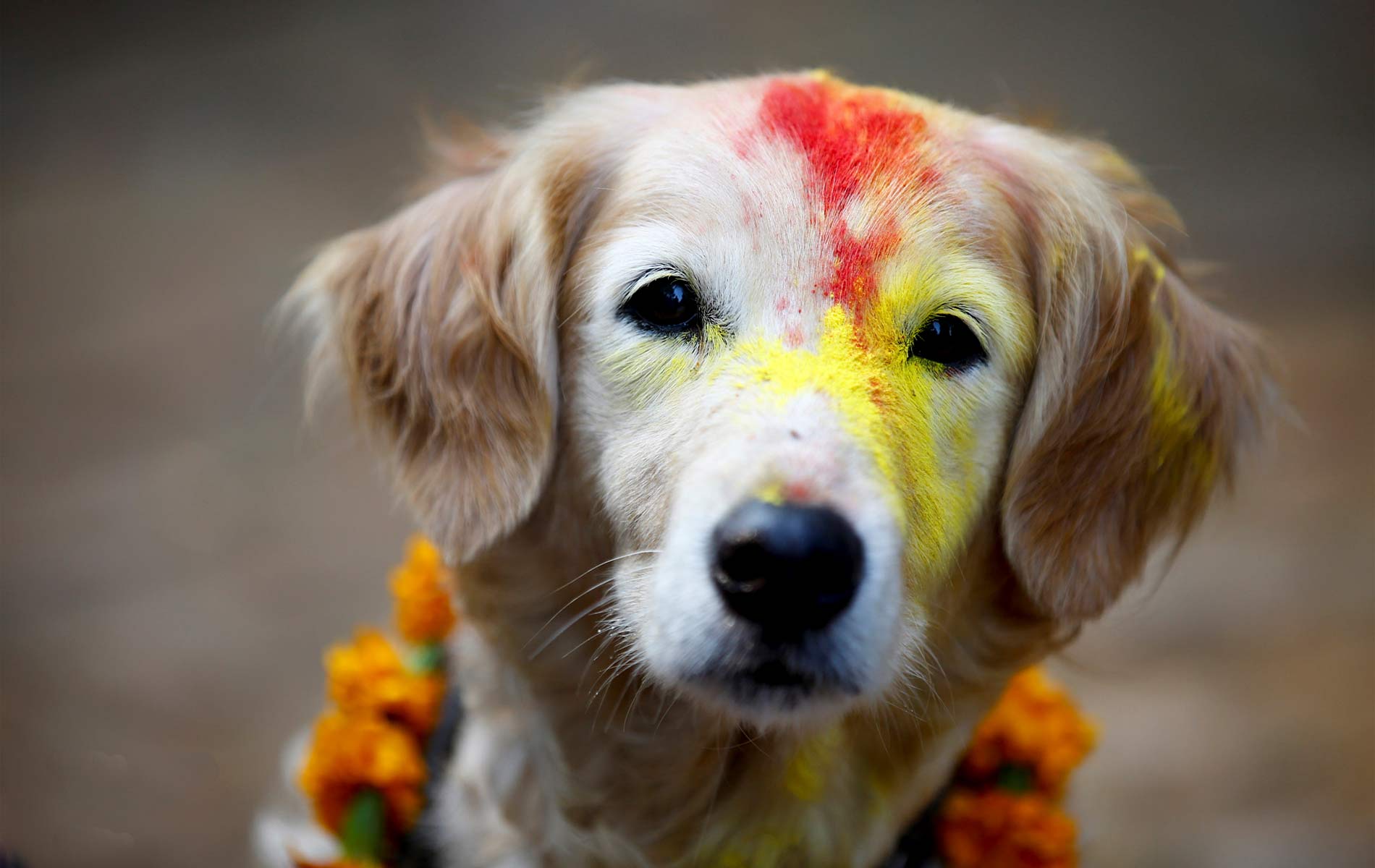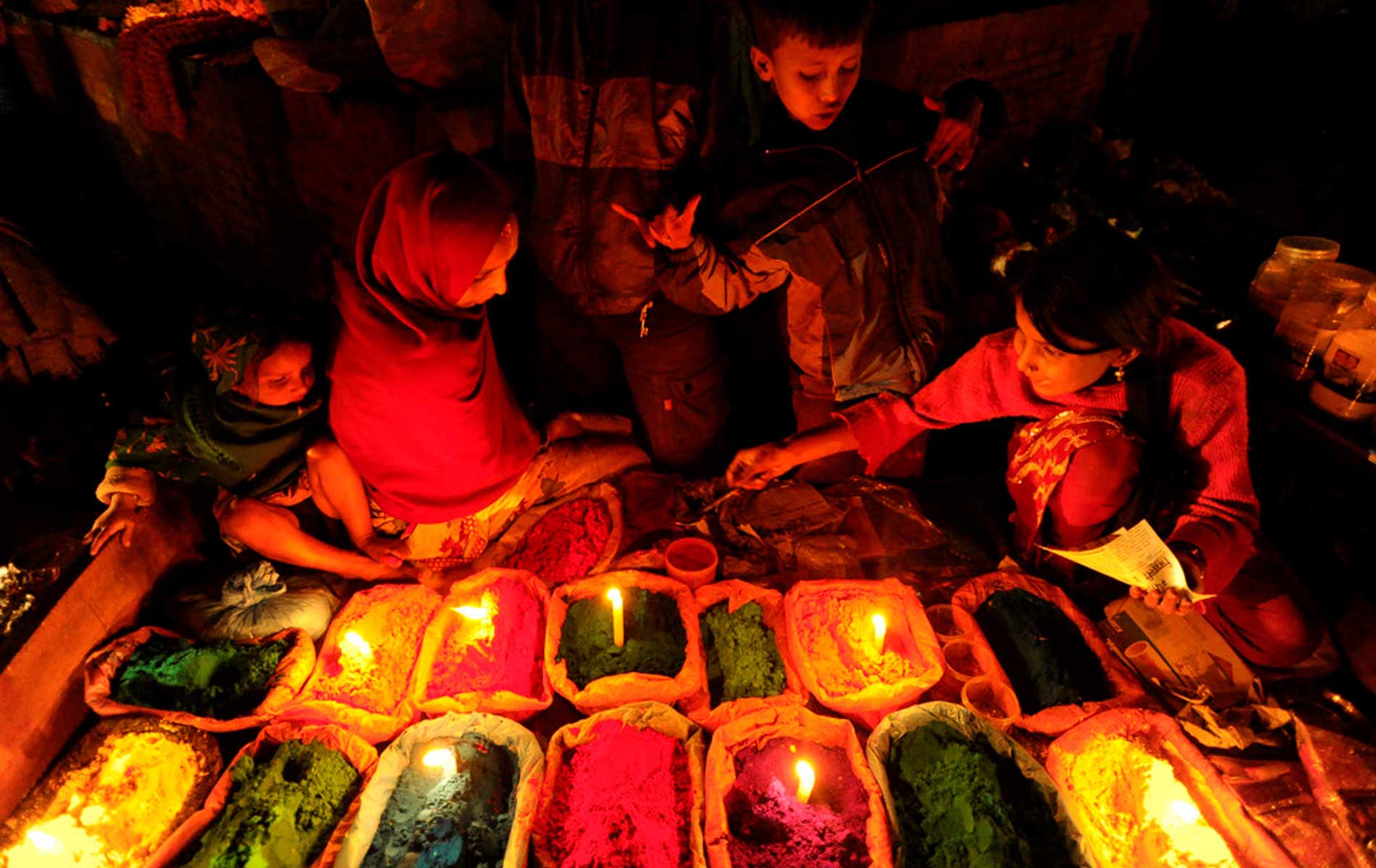Tihar
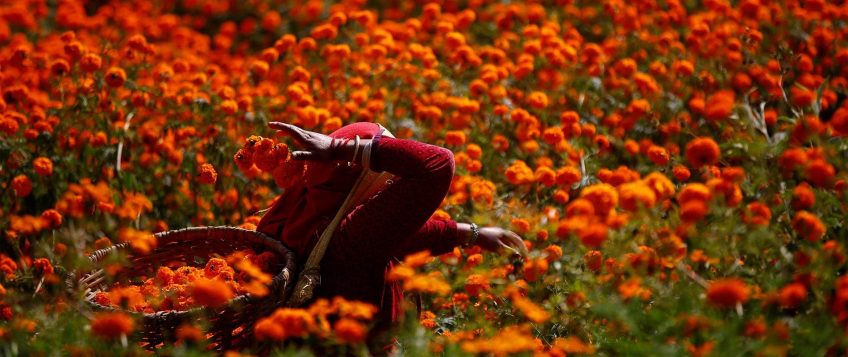
The societies of Nepal are rich in many dimensions of Life, major is the culture. Religion here is a tiny part of huge cultural practices. People celebrate each others festival, take part in feasts and celebrations in a harmonized fashion. Basically, in Nepal, people celebrate festivals more that the number of days in a Year. Among the some major festivals, Tihar plays a role of cosmopolitan occasion. If you are thinking to visit Nepal for some festival tour or photography tour or any kind of cultural exchange, you can choose festival time to visit here.
The cherishing days of Tihar are quite impressive and valuable in Nepalese families in several aspects.
Tihar – Also known as Yama Panchak, is a very famous festival celebrated by Nepalese people. The lord of death – Yamaraj and the goddess of wealth – Laxmi, is worshipped during Tihar. Tihar is a festival of lights and colours where every house of every nook and corner is decorated with lights and flowers. Though, there are various names of Tihar such as Swonti according to Newari people and Diwali according to the Indian people, the main theme of Tihar remains the same. The house and the whole locality seems amazingly beautiful being decorated with the traditional lamp – Diyo made up of clay, where the twisted cotton is dipped in the oil and is lighted. The fireworks add more delight to the Tihar festival.
Tihar is celebrated for five days. The first day beings from the Trayodashi of Kartik Krishna Pakshya (third day of darkmoon side of Kartik) and ends in the fifth day with the Dwitiya of Kartik Sukla Pakshya (second day of full moon side of Kartik). Every day of Tihar carries a special meaning and significance. The very first day of Tihar is Kaag Tihar in which the crows are worshipped by offering foods and sweets on the roof of the house. Kaag (crow), the informant of Yamaraj is believed to bring the message of sadness and misery. Therefore, people worship Kaag (crow) with a belief that the Kaag would not bring any message of sorrow at their house.
As the festival falls during the Autumn season, the skies are more clear
Kukur Tihar – Dogs Day
The second day of Tihar is Kukur Tihar. This day is celebrated as Khicha (Dog) Puja by the Newari people. The dog is considered as the agent of Yamaraj and also the guard of the hell. Furthermore, this day is celebrated as Narka Chaturdashi. So, the dog is worshipped by putting Tika ( Dot of the red colour (abir) and yellow colour (kesari) ) and garlands and people offer sweets and food to the dogs. Also, they are worshipped for their loyalty.
Cows Day – a day to worship Goddess of Wealth
The third day is Gai Tihar or Laxmi Puja. On this day, people clean their houses, decorate with colorful flowers and make impressive designs of Rangoli in front of their doors with seven different colours. The colours include the seven colours of the rainbow – VIBGYOR ( Violet, Indigo, Blue, Greeen, Yellow, Orange and Red ).
The house is decorated and cleaned to welcome the goddess of wealth – Laxmi and other gods and goddesses so that they will bless their home with wealth and happiness. The day becomes busier but the level of satisfaction is more than the tiredness. Also, they worship gai (cow) – the symbol of goddess Laxmi. At the auspicious time of evening, Goddess Laxmi is worshipped. The women take fast and prepare varieties of delicious sweets and desserts and also prepare selroti. The adults and the children gather together and play Deusi Bhailo by singing the folk Deusi Bhailo song and dancing on various songs.
Oxen Day
The fourth day is Goru Tihar (day of oxen ). This day is celebrated according to the people and their tradition. The people worship ox in this day. The Newari people celebrate this day as Mha Puja – i.e. they worship themselves. This day is also celebrated as the start of a new year Bikram Sambat according to the Newari people. People also worship Govardhan (hill) by taking the cow dung as Govardhan. Remembering the contribution of Lord Krishna to save his people with the help of Govardhan Hill.
Bhai Tika – Brothers and Sisters’ day
The fifth day is Bhai Tika where the sisters worship their brothers for their long life. With certain rituals, bhai tika is celebrated. Every step of the ritual has separate importance and meaning. The day, Bhai Tika, has a long story back. It is believed that the Lord of death – Yamaraj went to put Tika from his sister Yamuna and she worshipped her brother as ritual by putting Tilak (Tika with seven different colours) on his forehead, garland and prepared sweets and other food items for her brother. So. Yamarj announced that those brothers who put Tika from their sisters would have a long life. It is also believed that the turf grass and the garland of Makhamali flower being fresh and not dried for the next year epitomize the long life of their brother.
In this way, the five days of Tihar are celebrated with joy and hope of prosperous, long and healthy life of their beloved ones. The cherishing lights and colours, the joyous days with songs and dance and the prayers for the loved one, Tihar, is a mesmerizing festival. The alluring beauty of the garden with the blooming flowers adds charm to the houses and also the festival of Tihar.
Tihar is the festival of celebration of sisterhood and brotherhood. Tihar is a festival for family reunion. On the day of Bhai Tika- the main day of Tihar, Sisters offer blessing and Tika to their brothers with different presents for their long life and brothers do the same in return. This is the most significant part of Tihar festival to preserve brotherhood and sisterhood through out the life. The temple of Baalgopaleshwor, located at the center of historical Raani Pokharai of Kathmandu, opens only once in a year on the day of Bhai Tika of Tihar. People who does not have brother or sister visit here to get blessings on the very day.
Tihar, a social festival
Communities representing all the religions whether it be Hindu, Buddhist, Muslim or any other, participate in celebrating Tihar as social festival in a perfect harmony. Tihar – being a festival of lights and colours, is loved by all the community living within Nepal.
With its rich and diverse culture and traditions, Dashain, Tihar is the biggest festival in Nepal. The five days of the Tihar are cherished in full as it carries the significance of each day.
The adults and children of a locality gather together to play deusi bhailo together and visit door – to – door of the same or another locality enhancing the social interaction in-between. The relatives or the neighbours gather together in the house to prepare sweet dishes, Selroti and the feast for Tihar. In this way, they socialize with each other. They get to know each other furthermore and have fun at the same time. To gather together and play swings in common place during the festival of Tihar is a part of traditional practice during the festival.
Tihar is also a festival of the celebration of the siblings. The brotherhood and sisterhood is enjoyed and celebrated. The spirituality of the tradition is kept and preserved for generations to generations along with having fun and entertainment. The happiness of gathering around, listening to those long back stories with grandmother and grandfather and meeting those siblings who were away for the time being is overwhelming.
There are a lot of preparations to be done for Tihar and hence the family members and relatives gather together for the preparation. The neighbours also gather together for the celebration of Tihar. Varieties of feasts are prepared and the house becomes lively with the laughs and gossip in the kitchen and the living room. The children enjoy the fireworks with their family or siblings.
Tihar, festival for animals
Nepal – land of unity in diversity, is a country enriched in festivals and celebrations of the cultures and traditions. Among the various festivals, Dashain is the largest festival of the Nepalese whereas Tihar is the second largest festival. Tihar is the festival of lights and colours celebrated for five days. The very first day is Kaag Tihar and the fifth day is Bhai Tika. With various significance and stories that dates back, Tihar is celebrated with rejoice.
Dog worshiped on the day of Kukur Tihar
Tihar is the festival where animals are worshipped and prayed. On the first day Kaag Tihar is celebrated where Kaag (crow and ravine) is worshipped. They are believed to be the messenger of death and also believed to bring the message of sorrows or griefs. So they are worshipped invite good luck rather than the pain and dismays.
On the second day, Kukur Tihar is celebrated where the loyalty and friendship of the dogs for humankind is celebrated. Dogs are believed to be the agent of the Lord of death – Yamaraj and believed that they can sense the death of the people early. The dogs are also considered as the guard of the Narka (hell). So, this day is also celebrated as Narka Chaturdashi.
On the third day, Gai TIhar is celebrated. In this day, cow is worshipped for all her favour to mankind. In the context of Nepal, cow is also regarded as the mother. The cow is regarded as the emblem of the goddess of wealth – Laxmi. So, in the evening Goddess Laxmi is worshipped with a belief that she will bless them with wealth.
On the fourth day, Goru Tihar is celebrated. This day is also known as Govardhan Puja. On this day, the hard working friends of the farmers i.e ox are worshipped. Also during this day, a mini Govardhan is made with cow dung and worshipped. This depicts that even the cow dung is venerated in Nepal.
With all those significance of every day of Tihar, it is a festival that worships animals.
On the day of Bhai Tika, the sisters pray for the long life of their brother with the certain ritual of Bhai Tika. The sisters and brothers who couldn’t meet for the months or years, meet on the day of Bhai Tika and share their happiness and sorrows along with the ritual of Bhai Tika.
So Tihar – the festival of lights and colours, is also a festival for family reunions.
Tihar a festival of Color, Light and color
Tihar – popularly known as the festival of lights and colors, is celebrated for five days. Every nook and corner of the town and village is embellished with the beautiful garlands of the marigold flower (Sayapatri phool) and lightened with the artificial colourful bulbs or the traditional lamp made up of clay ( Diyo). The twisted cotton is dipped in the oil and placed in the Diyo and is lighted. With the illumination of those beautiful lights, everyone feel overjoyed.
Color marker to kathmandu during the festival of Tihar
On the day of Laxmi Puja, people clean their houses and decorate the windows and the doors with garlands. They mark a line of red clay ( Rato mato) to their temple where Laxmi is believed to be worshipped. Also, they make winsome designs varieties of Mandala –Rangoli at the front of main doors with a belief to welcome the Goddess Laxmi as well as other gods. Seven different colours (colours of the rainbow), flowers, floors and leaves of the plants are used to make Rangoli (customized Mandala).
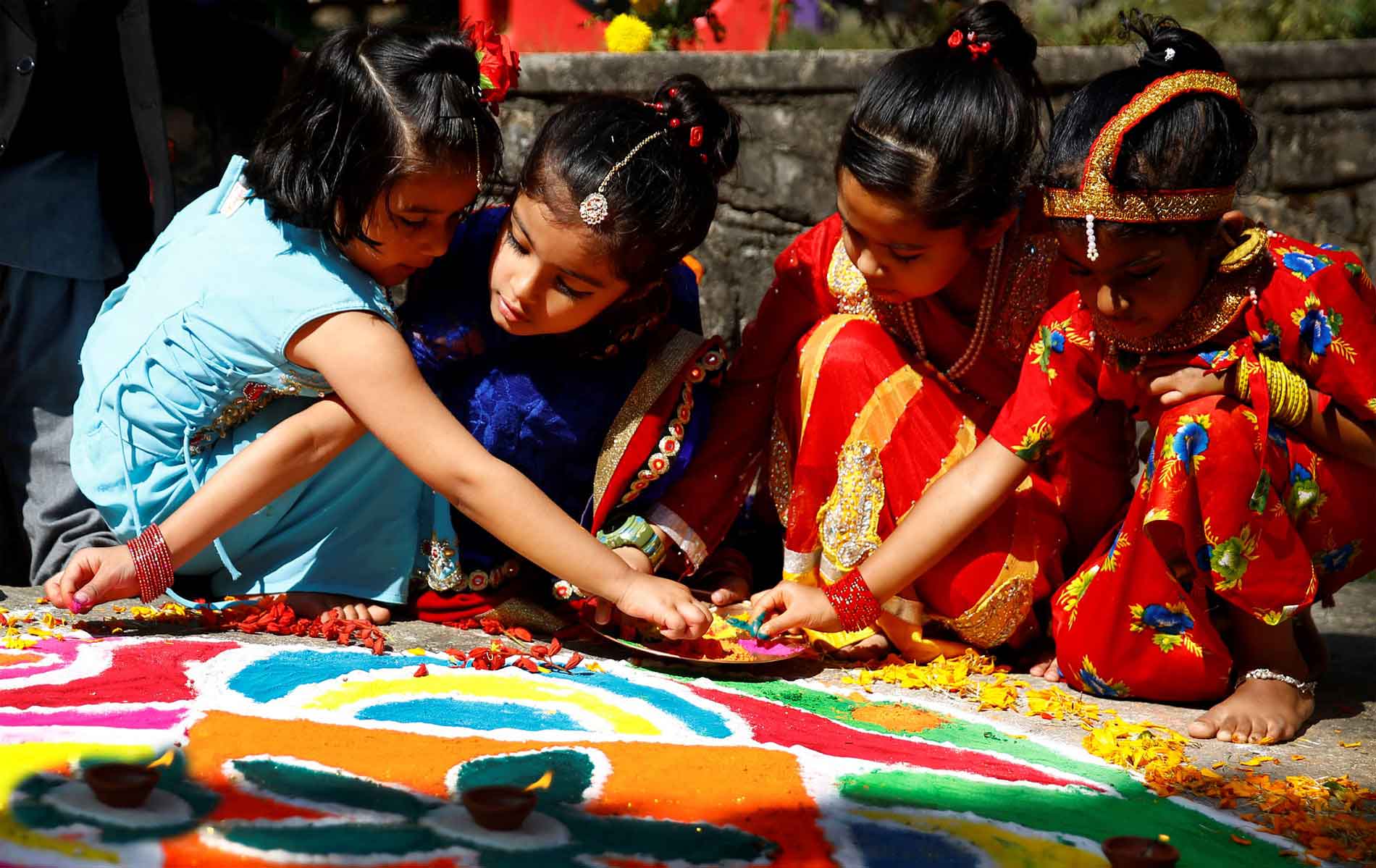
Kids making Rangoli, a customized flower Mandala as a preparation for Laxmi Pooja, worshiping the goddess of wealth
The lights and colours are so beautiful that you feel like literally being in heaven. So Tihar is the festival of light and colour.
Tihar, a festival of the goddess of wealth– Laxmi
Tihar, the festival of lights and colours is also known as Yamapanchak. Tihar is celebrated for five days. Each day has its own importance.
On the third day, Gai Tihar is celebrated. During the evening of the same day, Laxmi Pooja – worshiping of goddess of wealth is conducted in each and every household and business houses. Performing a special ritual, the Goddess of wealth – Laxmi is worshiped and invited to ones house. From the early morning the preparation of Puja begins.
The people clean their houses, decorate the windows and doors with the garlands of Sayapatri phool and prepare sweet dishes to offer for Goddess Laxmi. Every activity is done to please the goddess Laxmi. Before the time of puja, people mark a red line from the front door to their temple and make a shape of the feet with their hands by dipping their hands in the red coloured water. This represents that Laxmi has entered the house. Then at the auspicious time, they worship the goddess of wealth – Laxmi.
Not only at home, Laxmi puja is done in the same pattern at the office as it is done at the home.
So, the second largest festival of Nepalese people – Tihar is the festival of inviting the Goddess Laxmi.

